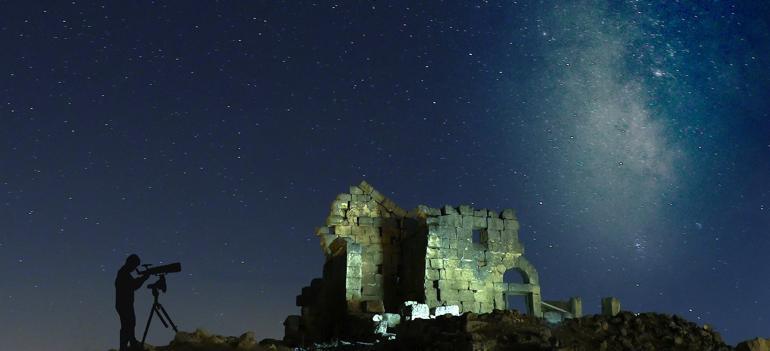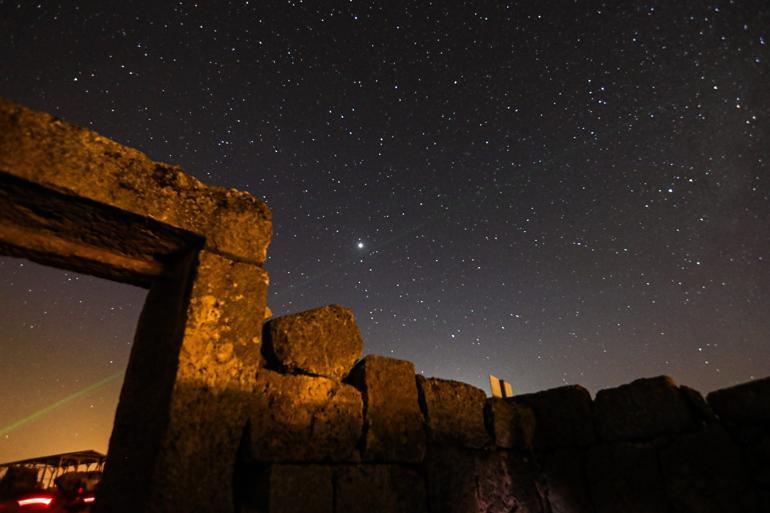
A major sky observation event kicked off on Sept. 2 at a 3,000-year-old castle in a picturesque region of southeastern Turkey.
After being held in southern Antalya province for 22 years, this year’s three-day International Sky Observation Event is taking place at Diyarbakır Zerzevan Castle, a historic structure which is on the tentative list of UNESCO World Heritage sites.
More than 1,000 professional and amateur astronomers from both Turkey and abroad are gathering at the castle, considered one of the 10 best places in Turkey to observe the sky.
Many seminars, competitions and workshops related to astronomy will be held during the event, as part of Turkey’s National Space Program, which aims to boost young people’s interest in space.
"We want Turkey's youth to keep space and technology on their agenda, and to improve themselves in this area," said Mustafa Varank, the country's industry and technology minister.

At the event, Varank said Turkey started its national space program last February with the motto "Look at the sky and see the moon" in order to boost the country’s skills in astronomical observations and tracking space objects from earth.
"The Zerzevan Sky Observation Festival and similar activities are invaluable in terms of raising awareness, especially for our youth and their families," he stressed.
"We want to make first contact with the Moon (in 2023) on the 100th anniversary of the republic, by successfully completing the Moon Research Program, which is the most important goal of the national space program," he explained.
Varank also said Turkey aims to land its spacecraft on the Moon with international cooperation at the end of 2023 and with a Turkish rocket in 2028.

"The design and development work of the unmanned spacecraft that we will send to the Moon is currently ongoing," he said.
Zerzevan Castle, with its unique architecture and style, is seen as one of the best-preserved Roman garrisons in the world, according to UNESCO.
The hinterland of the castle once formed the extreme borders of the Roman Empire in the east, and witnessed struggles of top-tier powers of the era in their pursuit to dominate the region economically, politically, and militarily.
The ruins of the castle walls scale up to 15 meters (49 feet) in height around in the complex, which used to contain watchtowers, a church, an administrative building, depots for weapons and grain, shelters, graves, and rock tombs.
